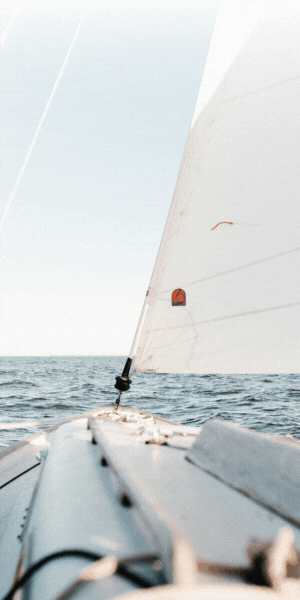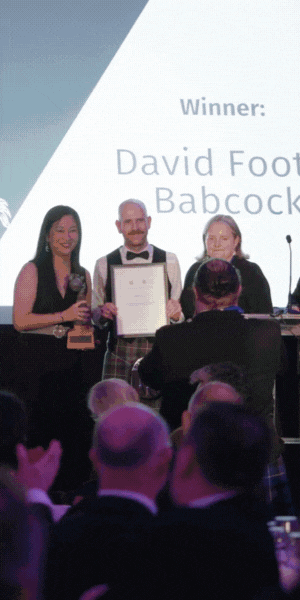The Naval Architect: February 2017
ABB’s Azipod propulsion technology is already highly popular within the ice-going vessel sector. The propulsors satisfy Polar Code (PC) requirements and are available with PC notations suitable for a range of ice conditions. Indeed, more than 60 Azipod-equipped vessels are either now in operation or ordered for working in icy waters.
Kimmo Kokkila, product manager, thruster products, ABB Marine and Ports Business Unit, says: “The interaction between pods and ice is well understood, which is perhaps why no pods have encountered structural damage due to ice loads. Several Azipod-equipped cargo vessels have also sailed the Northern Sea Route, some without icebreaker assistance.”
Among the latest vessels to be fitted with Azipod units is Polaris, the Finnish Transport Authority icebreaker delivered in September 2016, which has been built to ‘PC4’ level under the Polar Code, covering year-round operation in thick first-year ice with old ice inclusions. This pioneering LNG-fuelled ship can break 1.8m thick ice at 4knots. Another icebreaker for the Polar Research Institute of China, also specified with Azipod propulsors, will be even tougher, ABB claims.
Meanwhile, the Azipod-equipped Christophe de Margerie will be the first LNG carrier delivered for the Yamal LNG project in the Russian Arctic. It is the most powerful vessel of its type, and is also the world’s largest capable of navigating independently in ice more than 2m thick.
ABB believes that new opportunities are opening up for Azipods within the niche polar cruise sector. Today, around 60 cruiseships are fitted with Azipod propulsion, including the world’s largest such vessels – Royal Caribbean’s Oasis class. Building on this track record, ABB is now firmly targeting the growing market for new generation cruiseships designed for crossing polar and sub-polar waters, believing the technology has several specific advantages in this sector.
For example, ABB claims, Azipod units benefit safety by achieving far shorter crash-stop distances. Kokkila says: “Performing a crash-stop using podded propulsors involves a 180-degree rotation of the entire unit while keeping positive propeller rpm. This reduces the crash-stop distance by half, while pods retain their full thrust throughout, conferring greater heading control even in heavy weather or in ice-infested waters.”
Azipod units allow the full thrust to be pointed in any direction, improving manoeuvrability in a way that is particularly welcome when navigating in proximity to icebergs and in icefields, while podded propulsion systems are also claimed to confer substantial benefits in collision avoidance scenarios. Furthermore, the manoeuvrability offered by pods is consistent across the full speed range and reduces the risk of getting stuck in compressed ice fields.
ABB also points out the benefits to cruiseships of the Azipod’s relatively quiet performance. “Podded propulsion is the most straightforward way of satisfying this requirement,” suggests Kokkila. “The arrangement eliminates the need for noisy gears and the pod motor and its shaft is located outside the ship’s hull. Furthermore, because the pulling propeller of the Azipod unit receives a steady wake field, it is easier to optimise for silent operation compared to a conventional pushing propeller with rudder. The vibrations experienced in manoeuvres caused by tunnel thrusters also become a non-issue.”
Furthermore, with Azipod propulsion, the electrical motor is installed directly on the propeller shaft, avoiding the need for mechanical gears, like those found in Z- or L-drive azimuthing thrusters. Consequently, the Azipod shaftline is more resilient to both bending and high torque peaks under ice loading. “If heavy ice interaction is expected, the Azipod unit’s electric motor and ship’s power plant can be configured to provide an over-torque capability, which prevents ice blocks impacting static propeller blades when the vessel is moving forward by inertia alone,” Kokkila points out.
The gearless construction of Azipod units further reduces the risk of environmental contamination, because the amount of oil used is only a fraction of that found in geared mechanical azimuthing thruster or traditional shaftline propulsion arrangements. In addition, the shaft seal design does not have an oil-water interface, thus earning approval under the U.S. Vessel General Permit (VGP).
These benefits are cited as the reasons Azipod propulsion was selected for Scenic Cruises’ Scenic Eclipse, the world’s first passenger vessel to be constructed explicitly to Polar Code standards. With a PC6 notation, this ‘discovery yacht’ is currently under construction at the Uljanik Shipyard in Croatia and is set to launch in August 2018.
It has also been confirmed that ABB Azipods will feature on a series of five Polar cruise capable vessels ordered by Crystal Cruises and Star Cruises at MV Weften. The PC 6-rated vessels will all feature a complete ABB propulsion system, electric power plant, automation and marine software system. The three Crystal ships will each be powered by two Azipod D units, whilst the two new Star Cruises ships will each be installed with three Azipod XO thrusters.
Marcus Högblom, vice president of global sales, passenger vessels and Azipod propulsion, says: “We are seeing increased interest in the polar regions from the passenger sector, so our expertise in the cruise and ice-going sectors means we are ideally positioned and can fully support our customers with their new projects.” Delivery of the five vessels is scheduled for 2019 onwards.
The ability of Azipod propulsion to satisfy a variety of hull forms and ice classes will be key in building up a reference list in the expedition cruiseship market over the coming years. The supplier’s recommended starting point for PC class expedition cruise vessel designs is its gearless Azipod DO propulsor series, which ranges in power from 1.5MW to 7.5MW per unit. With strong hydrodynamic performance matched with good overall efficiency, a twin Azipod DO installation can achieve a 10% power saving compared to a twin shaftline installation with electric propulsion, says ABB.



